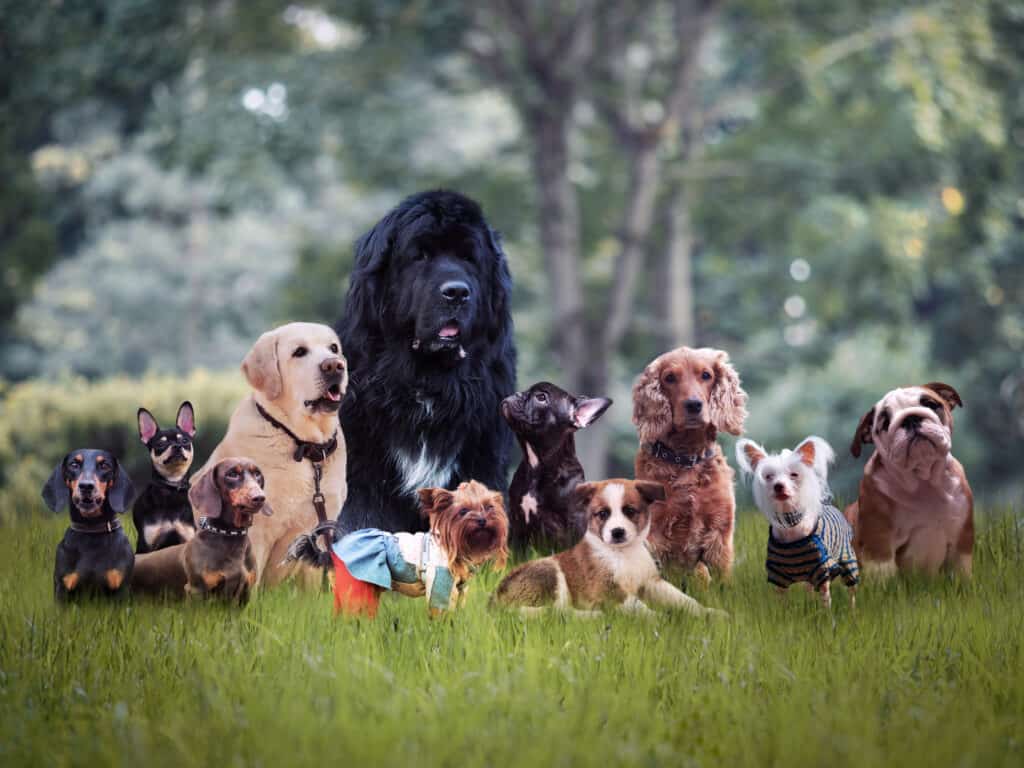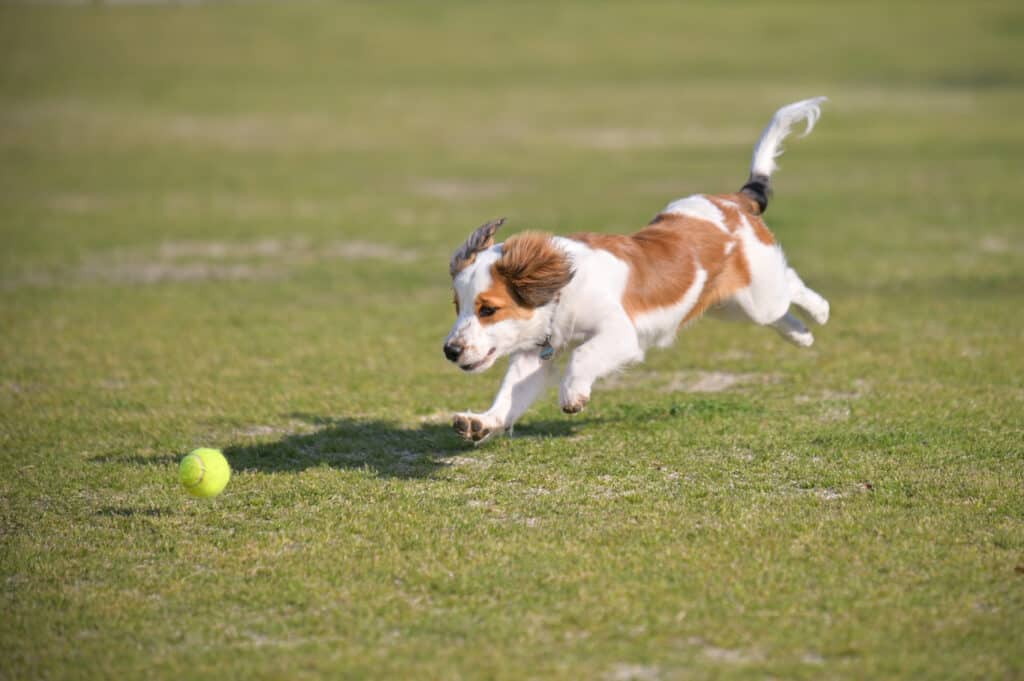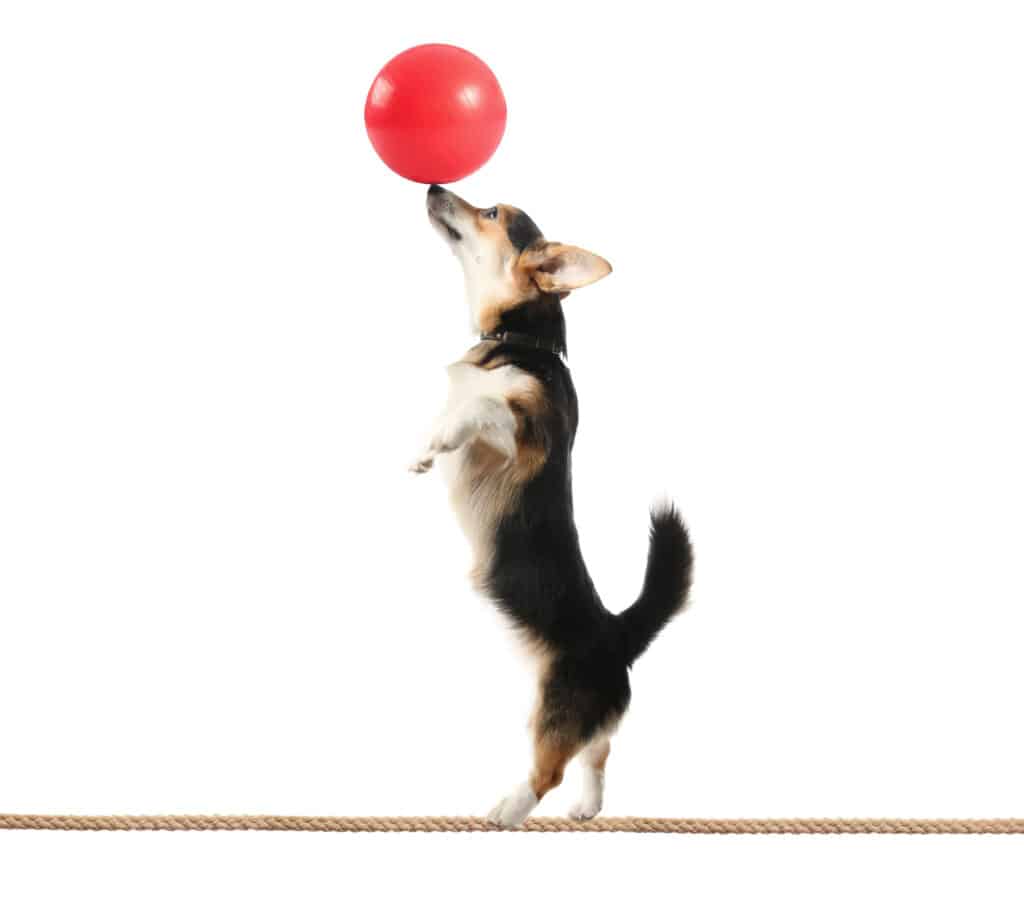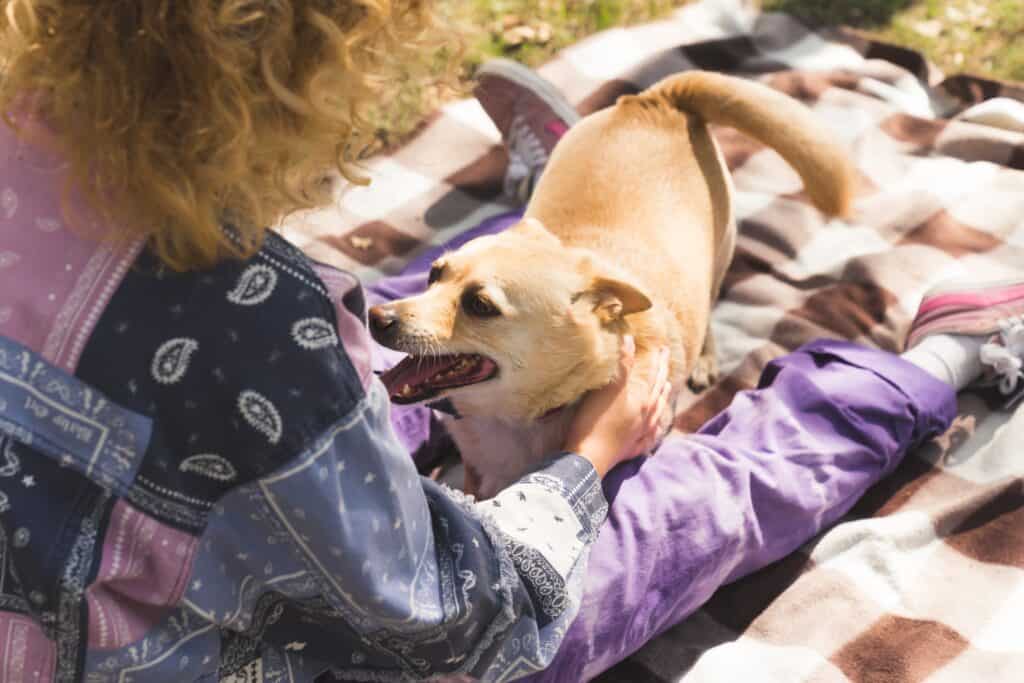Tails are hardly unusual in the animal kingdom and it is easy to see how useful they are for some animals for balance or for swishing away insects. But why do dogs have tails?
The main purpose of a dog’s tail is providing balance. However, it also fulfills a range of rather versatile functions which in some cases, may depend on what breed a canine is. And you can find out about them right here.
What Are Tails?
Sure, we could all describe a tail, and we all know a tail when we see one, but what are they actually?
The scientific description is that it is an extension of the spine, otherwise known as the backbone. Both the spine and tail can bend because they are made up of lots of little bones (called vertebrae) rather than one big bone. The little bones in the tail are smaller than the ones in the spine. Wrapped around the vertebrae are muscles, blood vessels and nerves. The muscles are needed to move the tail around and the nerves are needed to provide sensation.
Dog tails are very variable and come in all sorts of shapes and sizes. This should come as no surprise because dogs come in all shapes and sizes too. In fact, experts believe that dogs have the greatest morphological (body shape) variety of all animals because of the breeding practices we have imposed on them. Put a Pug and a Great Dane next to each other and they don’t look like they should be in the same species, yet they are close cousins!

Dogs have the greatest morphological variety of any animal, due to how we’ve bred them over millennia.
©Irina Kozorog/Shutterstock.com
Why Do Dogs Have Tails?
Tails offer several advantages to dogs, and this is why they have them. Let’s look at each of them in a little more detail.
Tails Help With Movement
Many dog breeds like or need to run around quite fast and change direction rapidly. This was certainly needed in the wild when the ancient dogs needed to chase prey or get away from predators. Many working dog breeds such as the Retrievers and Spaniels need to run after prey to bring it back to their human masters.
Tails are very useful when it comes to changing direction at speed. Next time you throw a ball for your dog to chase, look at how they hold their tail when they alter their course. Their front legs alter direction sharply but the rear legs stay pointing in the original direction. Interestingly, the tail moves to the new direction and acts as a counterweight for the rear of the body. This prevents the dog’s body from spinning off course and rolling on the ground.

Dogs use their tails to shift direction when chasing something.
©Julian Krakowiak/Shutterstock.com
Tails Aid a Dog’s Balance
Similar to many other animals, dogs use their tails to help them balance in precarious situations. If you have ever seen a dog walking along a narrow pathway, you will see them move their tail from side to side. They are doing this to add weight on the opposite side of the body from their tilt. A tightrope walker uses a similar approach. Some dogs like nothing more than scrambling across rocks and narrow ledges where it is uneven underfoot and you can see them moving their tail around for balance.
Tails also help dogs to jump. They lift them up in the air as they leap and this helps them to land on their feet. Dogs also use their tails as rudders when they are swimming – they help them to change direction in the water.

Dogs use their tails to balance themselves and jump.
©Pixel-Shot/Shutterstock.com
Tails Provide Warmth
Some dog breeds have developed characteristics that help them survive in certain environments. The Siberian Husky is a typical example. These dogs have a large and fluffy tail. When a Husky has to sleep outside in cold temperatures, they wrap their tail across their face to keep it warm.
Dog Tails and Communication
Body language is a big part of communication in dogs. By looking at what your dog is doing with their tail, you can often tell what they are feeling. We’ve all been greeted by a waggy tail and we know that this means our dog is happy to see us! We’ve also seen a frightened dog with their tail tucked between their legs.
However, tails are more important when it comes to dog-to-dog communication. This is often about establishing which dog is dominant in any encounter. Under these circumstances, a wagging tail is used to waft a dog’s unique scent around (produced by anal glands near their butt) and this is to establish their dominance. Dominant dogs keep their tails high for the same reason because they are confident enough to announce their presence with their scent. Submissive dogs do the opposite. They don’t want to advertise their presence so they keep their tail down to hide their scent.
Pups learn about these methods of communication from their Mom and littermates. In fact, pups don’t begin to wag their tails until they are about 5 weeks old and start to interact with their siblings.

Dogs often use their tails to communicate their emotions.
©Poppy Pix/Shutterstock.com
Dog Tail Language
Now that you know that dogs can communicate with their tails, it’s time to teach you a little dog tail language!
Tentative slight wag: “Hi, there just wanted to let you know that I’m here but feel free to ignore me if you’d prefer.”
Broad, sweeping wag: “I’m a happy dog and I’m really pleased to see you.”
Very broad wag with butt swinging: “Oh boy I love you, life doesn’t get much better than this!”
Slow wag with tail half-mast: “I’m not completely sure how I feel about this so I’m reserving judgment until I get some more information.”
Tail held high (dominance): “I’m the top dog around here so have a whiff of my anal gland scent!”
Tail tucked between legs (submissive): “I’m trying to pretend that I don’t exist and I’m trying to hide my anal gland scent so that no one notices I’m here.”
Tiny high-speed movements that look like vibrations: “I’m highly aroused and focused on something and any second now I am going to bolt after it.”
Tail held high and quivering: “Hold my coat, I’m going to have a fight.”
How Do Dogs With No Tails Communicate?
So, if dog tails are so essential for communication, how do dogs with no tails cope? Unfortunately, they do tend to struggle to make themselves understood to other dogs. Animal behavior experts think that they rely on other mechanisms including facial expressions, body positioning and vocalization. Some dogs with very small tails wiggle their whole body instead of their tails. French Bulldogs are a typical example.
These mechanisms are not always that easy for other dogs to understand and misunderstandings are more likely. This is why research has found that dogs with short tails or no tails are twice as likely to have an aggressive episode with another dog than dogs with regular tails.
This could be important if you own a dog with a short tail. It would be wise to monitor their interactions with other dogs carefully especially where there are a lot of dogs.

French Bulldogs will wiggle their whole bodies to compensate for not having tails.
©dezy/Shutterstock.com
Why Do We Cut Dogs’ Tails Off?
With the question, “why do dogs have tails?” having been examined in detail, it’s time to take a look at this practice. Cutting off dogs’ tails is also called docking. It is a traditional practice that used to be very popular but you don’t see it carried out so often these days. It was used mainly for hunting breeds. This was due to fears that their tails could get caught up in branches and brambles as they were running through the brush. Getting caught in a bush would obviously stop the dog from doing their job and could also cause an injury.
Some recent research has backed this up to a certain extent. A study in the UK found that dogs who swished their tail over a wide angle and dogs who did not have docked tails, were more likely to suffer a tail injury.
Also, some breeds including the Cocker Spaniels, Lurchers and Greyhounds, were more likely to sustain tail injuries.
Some breeders and dog owners carry on the tradition but it is more for cosmetic reasons. You will often see Boxers and Doberman Pinschers with docked tails and this is usually done when they are pups. Vets are not generally big fans of docking as it can affect how a dog perceives pain throughout the rest of their life.
Dogs can also lose tails through injury. There are even horrific injuries called ‘degloving injuries’ where the skin is ripped off a tail. This can result in the tail having to be removed (amputated) under anesthetic.
Ready to discover the top 10 cutest dog breeds in the entire world?
How about the fastest dogs, the largest dogs and those that are -- quite frankly -- just the kindest dogs on the planet? Each day, AZ Animals sends out lists just like this to our thousands of email subscribers. And the best part? It's FREE. Join today by entering your email below.
Thank you for reading! Have some feedback for us? Contact the AZ Animals editorial team.








